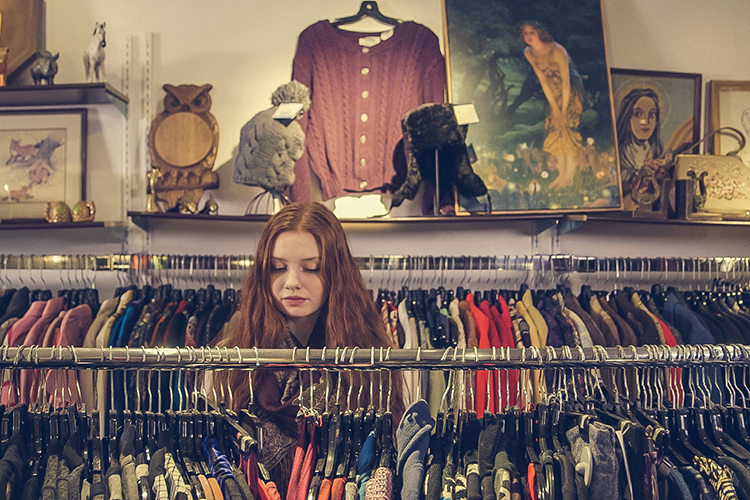How does Generation Z shop?
The shopping behaviour of Generation Z, commonly referred to as Gen Z, differs significantly from previous generations. By most definitions, Gen Z includes those born from 1996 to 2012 and from 2020 they represent the largest group of consumers worldwide. They present new challenges for companies, brands and retail; but also open up opportunities. In order to meet the expectations of this generation and turn them into customers, new strategies are required.
How does Gen Z tick? What drives them on? How does this affect their consumption behaviour? And how can companies, brands and retailers reach them? These are the questions we focus on.
Enormous purchase power, but pragmatic
Although Gen Z is a young generation, they already have significant purchasing power and sometimes spend substantial amounts of money. Both online and offline. At the same time, however, they are very pragmatic when it comes to spending.
Gen Z attaches great importance to quality, value and thoughtful consumption. For higher prices, they expect equivalent values. Among other things, this leads to a lower brand loyalty of Gen Z, which distinguishes them from the Millennials, for example. They are only willing to spend their money on expensive brands if the products are high quality, durable, innovative and sustainable. Not even 20% of Gen Z are loyal to (only) one brand. Branded products in themselves are not necessarily important to them. One of the reasons why Thrift Shops, in principle second-hand shops, are currently experiencing a boom not only in the USA.

Digital natives, open for new concepts
Their world has been digital from the start. Gen Z is shaped by the internet, constant online presence, permanent accessibility and availability. They grew up with digital media, social networks, mobile devices and a variety of new technologies that they use quite naturally for themselves.
E-Commerce and online shopping – nothing special for them. Searching and shopping for products via apps such as Facebook, Instagram, Snapchat or, more recently, TikTok is trending. This forces retailers to use modern channels and enter new collaborations in order to be present and, more importantly, to be found. For example, 2018 Amazon and Snapchat partnered to enable users to search for Amazon products by taking a photo in the app. Visual search tools, Augmented Reality tools, Checkout from Instagram or ‘Shop the Look Ads’ at Pinterest are just a few of the many new ways Gen Z can be reached.
Modern shopping channels such as Instagram, Pinterest, Facebook etc. should not be neglected, because this is where the Gen Z consumers are. Companies and brands must be present on all relevant media channels with suitable marketing and advertising strategies that connect the different channels. Either themselves or through collaborations (e.g. with Influencers).

Compare, question, exchange
As digital natives, Gen Z consumers are very well prepared. Constant exchange and interaction are part of their everyday life. Their purchasing behaviour is not influenced by classic marketing and advertising strategies, but by opinions from the immediate personal environment as well as from social media. Over 70% would make a purchase based on recommendations and reviews from social networks. Just as many have written online reviews themselves.
Influencers, influential people who act as opinion leaders and multipliers on the social web, are a cultural phenomenon of Gen Z. They have fundamentally changed the way Gen Z interacts with products, companies and brands and how they shop. Influencers use a variety of digital platforms, at the top – Instagram, to share their opinions just about everything with sometimes more, sometimes fewer followers, who often see them as a trustworthy source or even as a virtual friend.
In order to distribute their products and content as well as to increase their awareness, many companies and brands today (also) rely on influencer marketing.
Sceptical, authentic and with passion
Gen Z is politically and socially active, environmentally conscious and committed, with passion. They expect the same from companies. Gen Z questions critically, evaluates quickly and decisively. There is no longer blind trust in companies and brands, rather scepticism. Switching to something new happens incredibly quickly. Authenticity is particularly important for the decision. Direct and honest communication. Transparency on as many levels as possible. Authentic brand stories. This is what Gen Z expects. They shop where they feel represented.
This means that products and marketing must be credible and authentically reflect the target group. For example, more and more companies are relying on natural image retouching for models or even doing without it altogether. In times of climate change and political turbulences, Gen Z also places great emphasis on ecological and social responsibility when shopping. Fast fashion is a thing of the past. Sustainability plays a major role in Gen Z. At the same time, they expect unique, innovative products that are tailored to their needs and values.
Companies, brands and their partners must communicate their missions and values openly and honestly and, of course, also implement them. In order to win over the critical Gen Z consumers, a high level of information is required.

Omni-channel-shopping, online and offline looking for experiences
Despite their strong online presence (no other generation spends more time on mobile devices), brick-and-mortar retail plays an important role for Gen Z. They want to experience and feel products in real life before they decide to buy them. Omni-channel-shopping and the connection between online and offline via various channels is the norm. For example, the majority of Gen Z consumers research online on mobile devices before buying products in-store. The same thing also happens the other way round: Information is collected and products are tested in the store, but the purchase then takes place online.
Gen Z sets high standards for stationary retail and expects experiences and service; both as straightforward as possible. This includes more than attractive shops and product presentations. From personalised recommendations, to innovative technologies such as informative touchpoints, modern payment options, interactive changing rooms or apps as assistants in the shop, up to virtual shops and the use of augmented reality or virtual reality. There are many ways to make shopping to an experience and to connect offline and online.
Additional services that make shopping convenient and easy are often used, whether offline, online or in conjunction. Free shipping, pick up and/or return online orders in stores, unlimited return policy for unworn items and the like. Many Gen Z consumers are willing to pay more for extra service and good shopping experience. It depends on the benefits and added values.
The importance of visual content
Whether for marketing, advertising, branding and more. Visual content is essential and contributes to the customer experience. Images, videos, 360-degree views, virtual models … The creative possibilities for creating visual content are almost limitless today. They not only have to be creative, but also offer added value and be optimally prepared for the different channels. Visual content is essential for Gen Z.
- 2023
- January (1)
- 2022
- December (2)
- November (1)
- October (2)
- September (2)
- August (1)
- July (1)
- June (1)
- May (1)
- April (1)
- March (1)
- February (1)
- January (3)
- 2021
- December (2)
- November (1)
- October (3)
- September (2)
- August (1)
- July (3)
- June (1)
- May (2)
- April (1)
- March (1)
- February (2)
- January (4)
- 2020
- December (2)
- November (3)
- October (4)
- September (1)
- August (2)
- July (1)
- June (2)
- May (3)
- April (3)
- March (3)
- February (4)
- January (4)
- 2019
- December (1)
- November (2)
- October (5)
- September (1)
- August (3)
- July (2)
- June (2)
- May (3)
- April (2)
- March (3)
- February (2)
- January (4)
- 2018
- December (2)
- November (2)
- October (3)
- September (3)
- August (2)
- July (2)
- June (2)
- May (1)
- April (1)
- March (2)
- February (3)
- January (2)
- 2017
- December (2)
- November (2)
- October (1)
- September (1)
- August (1)
- July (1)
- June (1)
- May (1)
- April (1)
- March (1)
- February (1)
